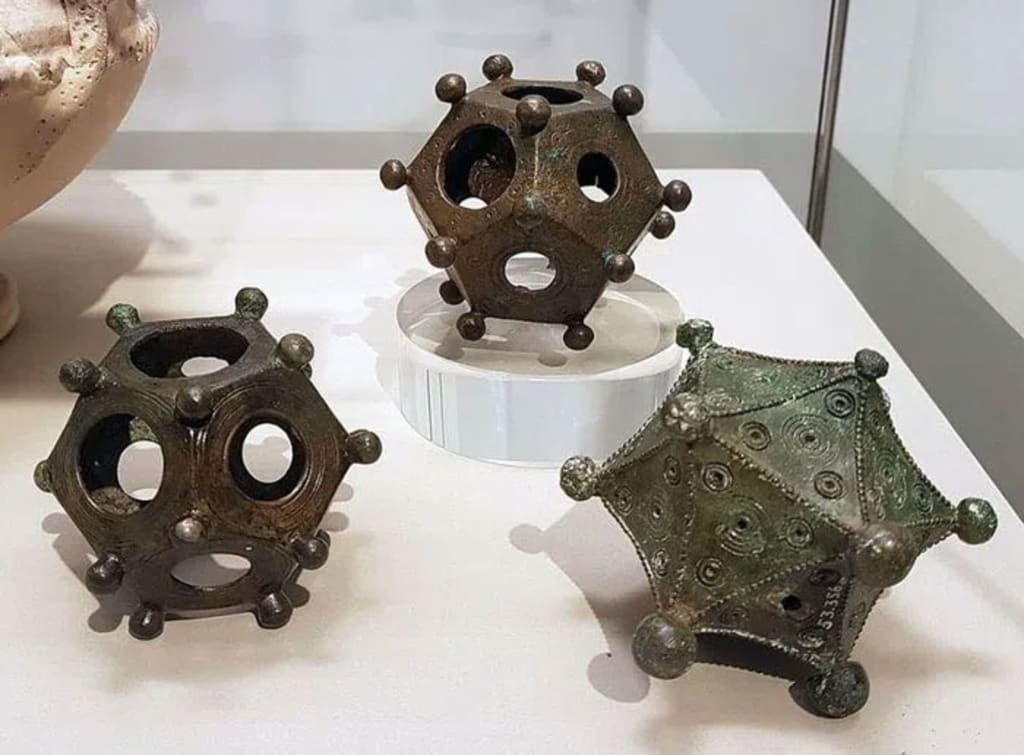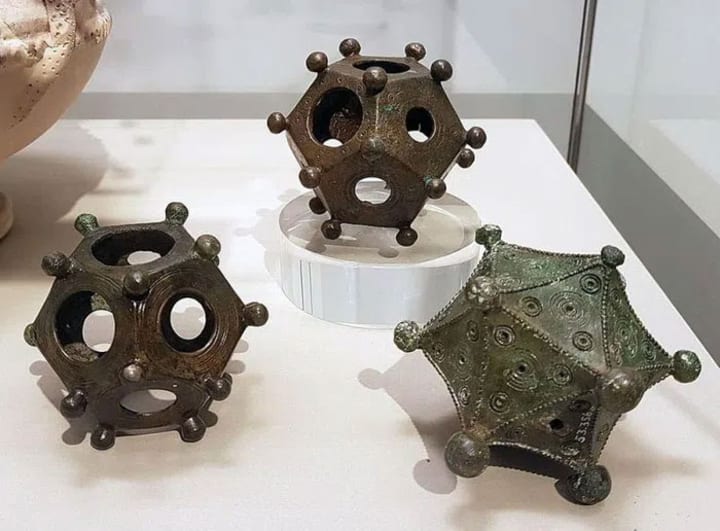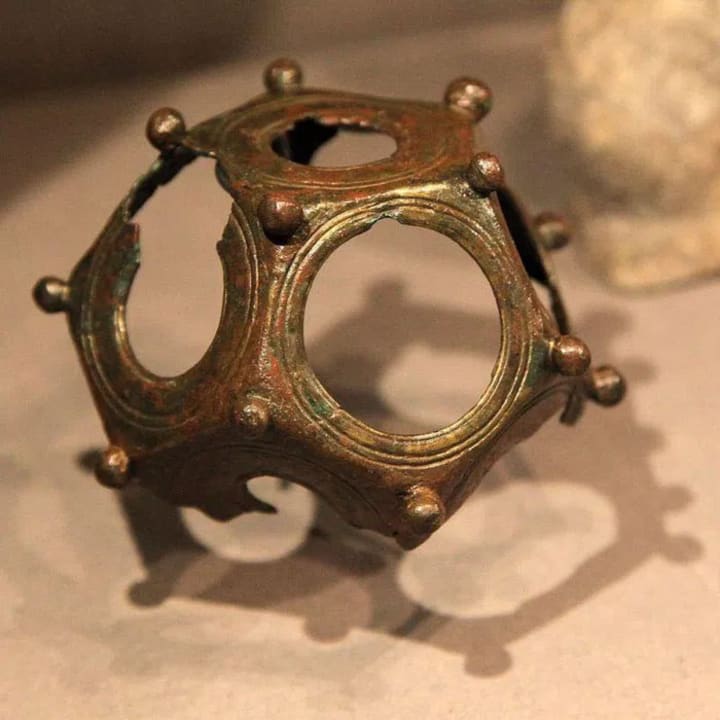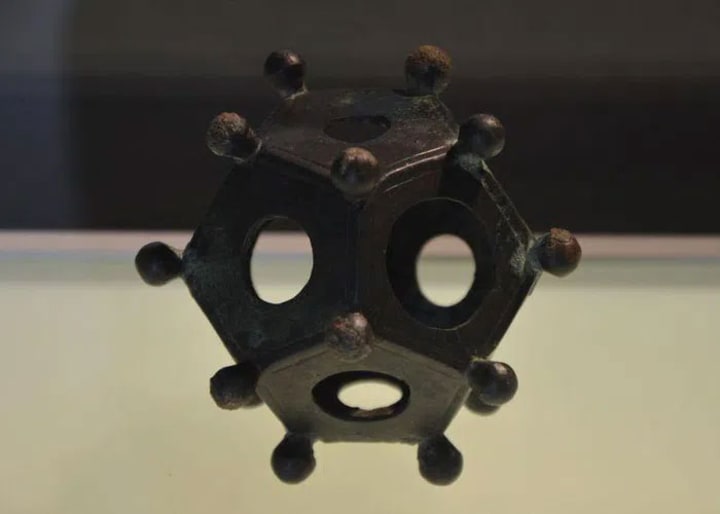Octahedron with 12 copper faces: The mystery of the history of a civilization
The secrets to ancient Roman civilization are something that even a lifetime of careful research cannot reveal.

One of those things is the Roman polyhedron. It is a hollow bronze object with an octahedral shape consisting of twelve flat pentagonal faces. Its presence in central Europe gives no indication of its purpose. But there are a few theories that have been put forward since the first discovery more than 300 years ago.

The first polyhedron was discovered in 1739 by a local historian in Aston, Hertfordshire along the English countryside. In his report to the Society of Antiquaries, he described the object as “a piece of mixed metal, or ancient brass, consisting of 12 equal faces.” The strange discovery surprised all ancient researchers, but there was more to come.
Each subsequently discovered object has a different size and structure. Most tetrahedrons range in size from 4 to 11 cm and weigh from 35 to 580 grams. Every pentagonal surface contains a hole, but the size of these holes is almost always different - within a single tetrahedron as well as between different volumes. Each of the five vertices has a spherical knob. Smaller than a tennis ball, the object appears more like a dice.
By 2016, 116 pieces of the block had been excavated across present-day Belgium, Croatia, France, Germany, England, Hungary, Luxemburg, the Netherlands and Switzerland. A single example made of silver was found in Geneva. Interestingly, no dodecahedron existed in the eastern Roman empire as predicted. Those found in the western region date back to the second, third and fourth centuries AD. The randomness of the locations as well as the lack of documents have further confused historians.
In 1987, a man named Brian Campbell discovered a tetrahedron in his yard. Other blocks were dug up in Roman military camps, temples and public baths. Some appear in theaters and mausoleums, some are in piles of discarded coins.

Many historians also find these objects in antique shops, which makes tracing their origins difficult. Most are decorated with designs and patterns, but never letters or numbers that can tell us their use. Only two dodecahedrons have been found in controlled scientific excavations. One of these locations may be a store that sells precious metals, confirming the possibility that the strange object is precious.
More than 200 historians have proposed more than 50 possible uses of the Roman tetrahedron. The dodecahedron appeared mainly in Gallo-Roman lands where Roman civilization overlaid Celtic civilisation. In that context, the 12 faces of the pentagon may be related to the universe. They may have been used for astronomical calculations with the sun shining through the holes at different times of the day. Dutch researcher Sjra Wagemans compared it to the icosahedron - an 20-sided convex polyhedron - which serves a similar purpose. G.M.C. Wagemans demonstrated through various estimates that a number of cubic blocks can be used to determine the best time for winter sowing in Northern Europe.
The final assumption remains that objects are sacred and important to religious practice. The dodecahedron found in the Idaean Caves (Crete) was made of rock crystal, and on its twelve faces Greek letters were found instead of holes. Some have suggested that the tiny hollow object was worn as an amulet or carried in a purse.

Despite our wealth of knowledge, modern researchers still have difficulty determining the use and significance of this 2,000-year-old artifact. Maybe, at some point, a deeper study will reveal the secrets of this little ball that has become one of archeology's biggest mysteries.
Despite our wealth of knowledge, modern researchers still have difficulty determining the use and significance of this 2,000-year-old artifact. Maybe, at some point, a deeper study will reveal the secrets of this little ball that has become one of archeology's biggest mysteries.
About the Creator
Ken aquariums
Telling stories my heart needs to tell <3 life is a journey, not a competition
If you like what you read, feel free to leave a tip,I would love some feedback
https://www.pinterest.com/Ken_Aquariums
https://s.shopee.vn/1B0pL9ZA9m
Enjoyed the story? Support the Creator.
Subscribe for free to receive all their stories in your feed. You could also pledge your support or give them a one-off tip, letting them know you appreciate their work.






Comments (1)
Very inspiring read, thanks for sharing. Please develop it further so I can have more of this interesting knowledge